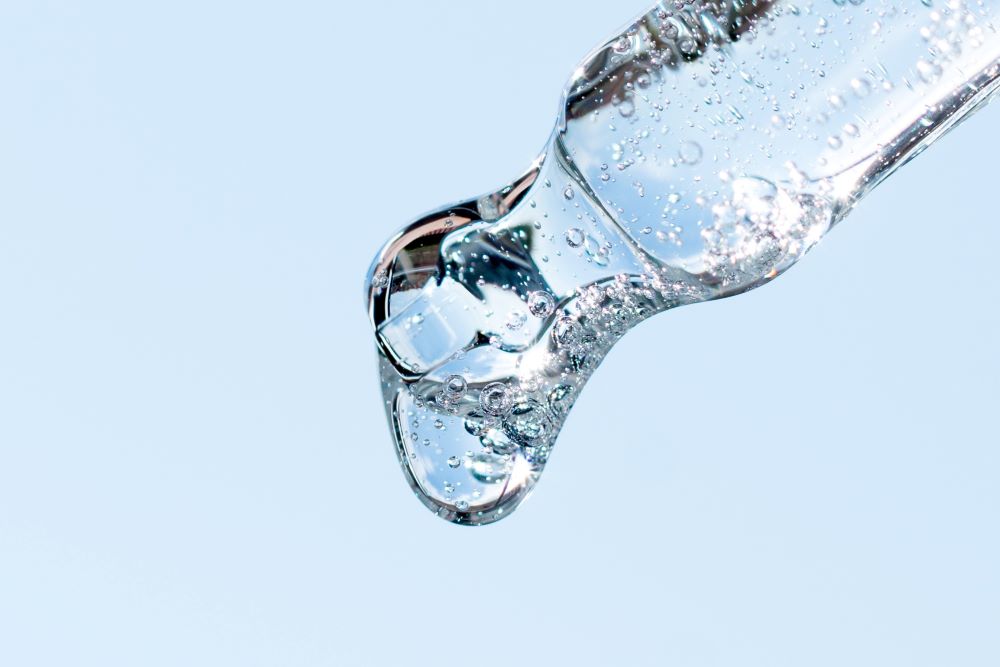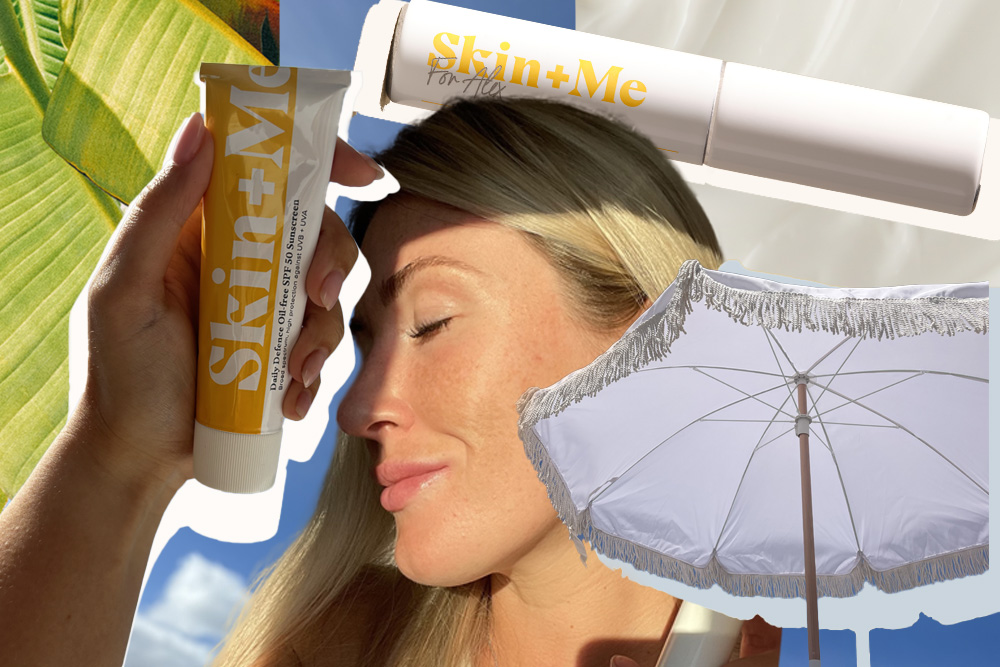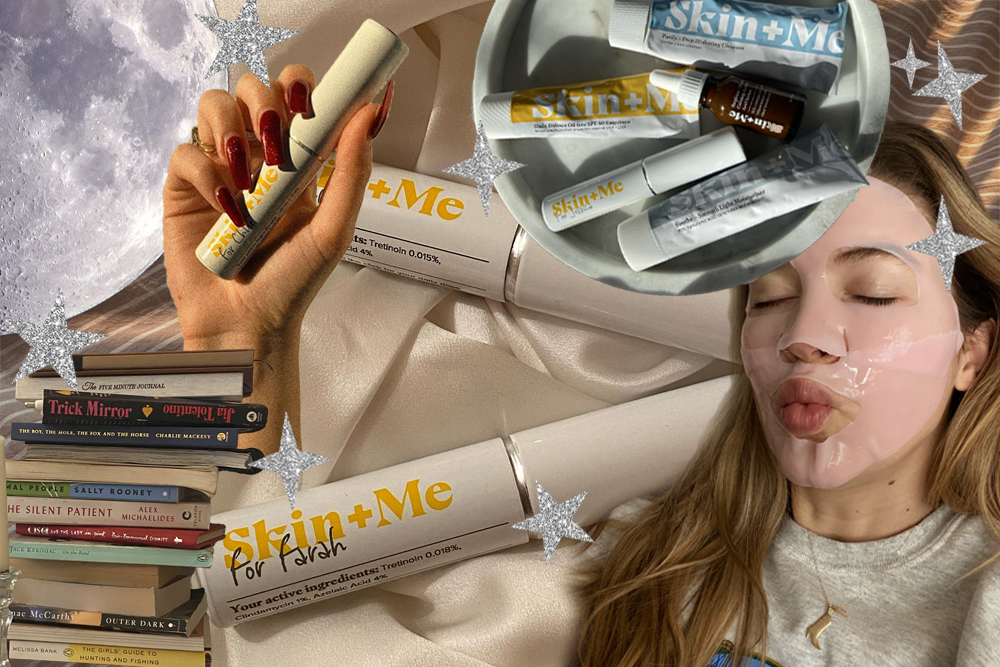Melasma 101

Link to share article here:
Ingredient Deep Dive: Hyaluronic Acid
A popular single-ingredient product, and found in everything from face cream to sunscreen, shampoo and more – hyaluronic (pronounced hi-ah-lew-ron-ic) acid gets the full influencer-endorsed hype treatment when it comes to off-the-shelf skincare.
But is hyaluronic acid really the moisture-boosting holy grail fans make it out to be? When used as recommended, the evidence shows that it does deliver some pretty magic (sorry, scientifically-proven) results.
Want your (skin) thirst quenched? Let’s dive in and take a look at what adding a splash of hyaluronic acid – or choosing supporting products containing it – can really do for your skin.
What is hyaluronic acid?
Without going too molecular on this stuff, we asked our Consultant Dermatologist, Dr Ben Esdaile to define what hyaluronic acid is and why it’s so popular,
“Hyaluronic Acid is a humectant that pulls in and holds moisture, plumping and hydrating the skin on contact. The ‘acid’ in the name can be misleading here as it doesn’t strip your skin – hyaluronic acid is actually nourishing and hydrating. It draws in and holds onto moisture from the surrounding environment for a plumper, more hydrated complexion. It’s great for dry, dehydrated skin and an oil-free option for acne-prone skin.”
What does hyaluronic acid do?
Due to the plumping effect and increased flexibility hyaluronic acid gives the skin, it’s loved by dermatologists for reducing the ageing appearance of wrinkles and fine lines. By grabbing moisture from the air (hyaluronic acid is capable of binding over one thousand times its weight in water) and adding it to your skin, hyaluronic acid helps to plump, firm and soothe your complexion.
As we age, the production of key substances in the skin, including hyaluronic acid (along with collagen and elastin) decreases. Using hydrating ingredients that can target this loss in vitality, can keep our skin looking fresher and more youthful.
Will hyaluronic acid suit my skin type?
Hyaluronic acid suits all skin types and is unlikely to cause irritation. It’s especially useful for dry and dehydrated skin when applied to clean, damp skin. Also for acne-prone skincare fans who are looking for an oil-free solution to soothe any dry areas of their face.
Will hyaluronic acid give me a reaction and is it safe to use?
Hyaluronic acid is unlikely to cause a reaction if used as directed. It’s naturally produced in our bodies anyway, so we shouldn’t expect issues.
Hyaluronic acid can be found naturally in many areas of the human body, including the skin, eyes and synovial fluid of the joints. Because of this synergy, you might sometimes hear of hyaluronic acid being described as ‘skin-identical’ as an ingredient.
Hyaluronic acid used in beauty and skincare products is primarily synthesised in a cosmetic lab through a process called biofermentation.
How do I use hyaluronic acid?
You can use hyaluronic acid in your skincare morning and evening – in fact, Skin + Me’s Rich Moisturiser contains hyaluronic acid as part of a blend of ingredients to keep skin supple and hydrated.
Using a moisturiser after applying hyaluronic acid on damp skin is a great way to ‘seal in’ moisture. It will also help hyaluronic acid penetrate the skin and absorb better if the air around you is dry.
If you follow this routine during the day (using your Daily Doser in the evenings) don’t forget to follow your final moisturising ‘seal’ step with a factor 30+ sunscreen.
What ingredients does hyaluronic acid pair well with?
Hyaluronic acid pairs well with most other ingredients. You may often see it on the shelf combined with vitamin C. That’s because the two in combination create a multi-pronged attack on the signs of skin-ageing.
Hyaluronic acid plumps the complexion. Vitamin C shields the skin from external aggressors (like sun damage and free radicals in pollution) and helps to fade discoloured patches on the skin.
Hyaluronic acid molecule size and absorption
A note here that hyaluronic acid comes in different molecular sizes. The larger the hyaluronic acid molecules, the better they are at binding water but the less effective they are at penetrating the skin. This means they only offer surface-level hydration.
The most effective surface hydration (through to the epidermis) can be found in products that contain hyaluronic acid in a variety of sizes. Don’t forget to ‘seal’ in your hyaluronic acid with that all-important moisturiser as a final step.
Hyaluronic acid and winter defence skincare
If your skin feels dry and stretched as the temperature falls (think: moisture-stripping wind or dehydrating central heating) hyaluronic acid is a great ingredient to take your winter skincare defences up a level.
Injectable hyaluronic acid
Because the plumping benefits are more visible when hyaluronic acid is absorbed beyond the surface of the skin, dermal fillers with injectable gel-form hyaluronic acid (you may hear the treatment called by the brand term, ‘Profhilo’) are increasing in popularity.
Helen Wyre at Skincare Clinic No.23 Skin explains, “Profhilo is a great step between a topical skincare and injectables. It’s a treatment where we inject hyaluronic acid on the lower part of the face, hands, neck or body – it gently spreads like honey underneath the top layer of the skin and is really effective”
Hyaluronic acid takeaways
+ Hyaluronic acid works well to soothe and hydrate all skin types
+ Use hyaluronic acid products on damp skin for best results
+ Formulations with varied sizes of hyaluronic acid molecules have the best chance of absorption
+ Look for hyaluronic acid combined in products you already use rather than in single-ingredient serums to keep your skincare routine minimal
New to Skin + Me? Get your first month of personalised skincare for £4.99 with promo code DOSE – complete our quick consultation here.
Looking for a routine refresh? Add the Dream Routine to your Skin + Me subscription.
In need of a restock? Head to The Skincare Shop for one-off purchases of your Routine Essentials.



